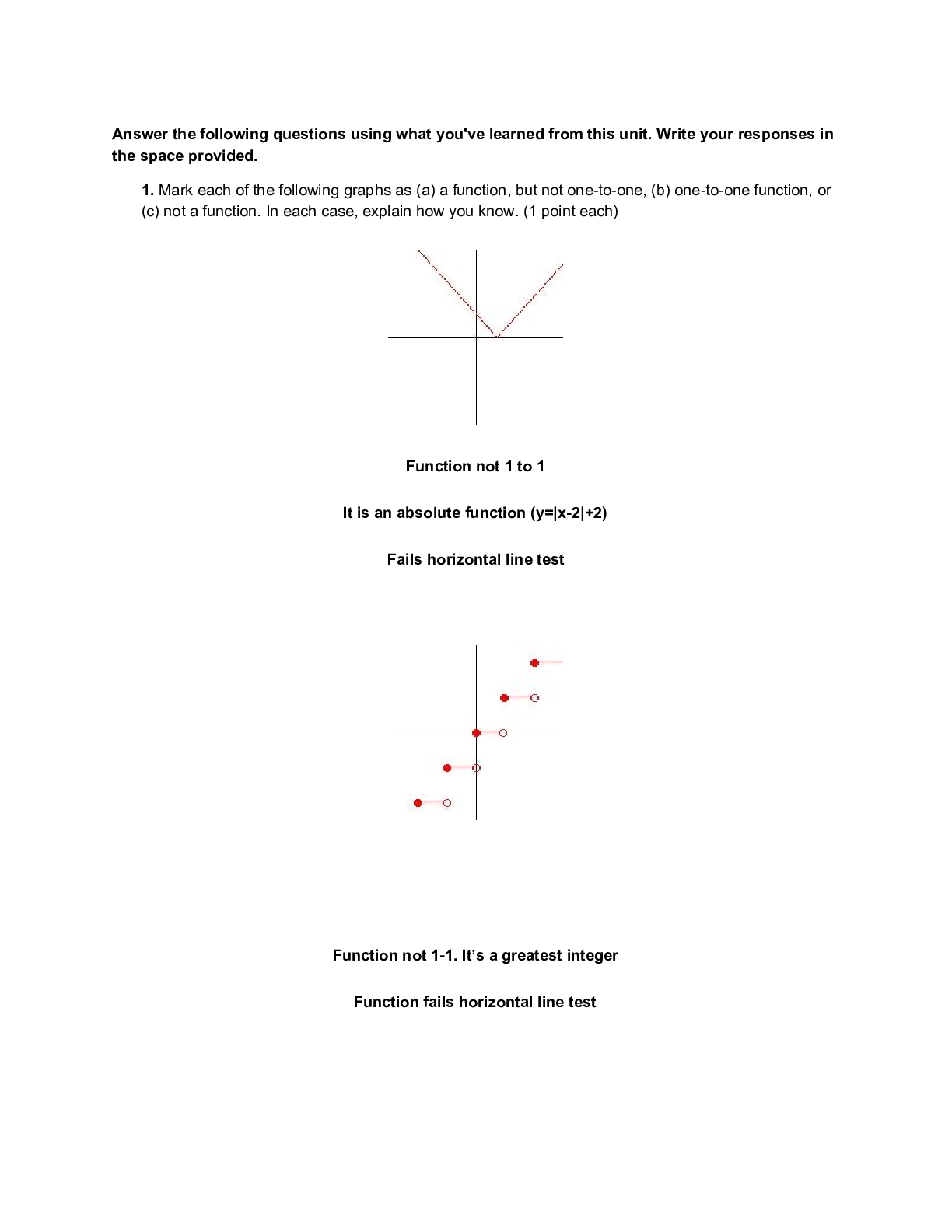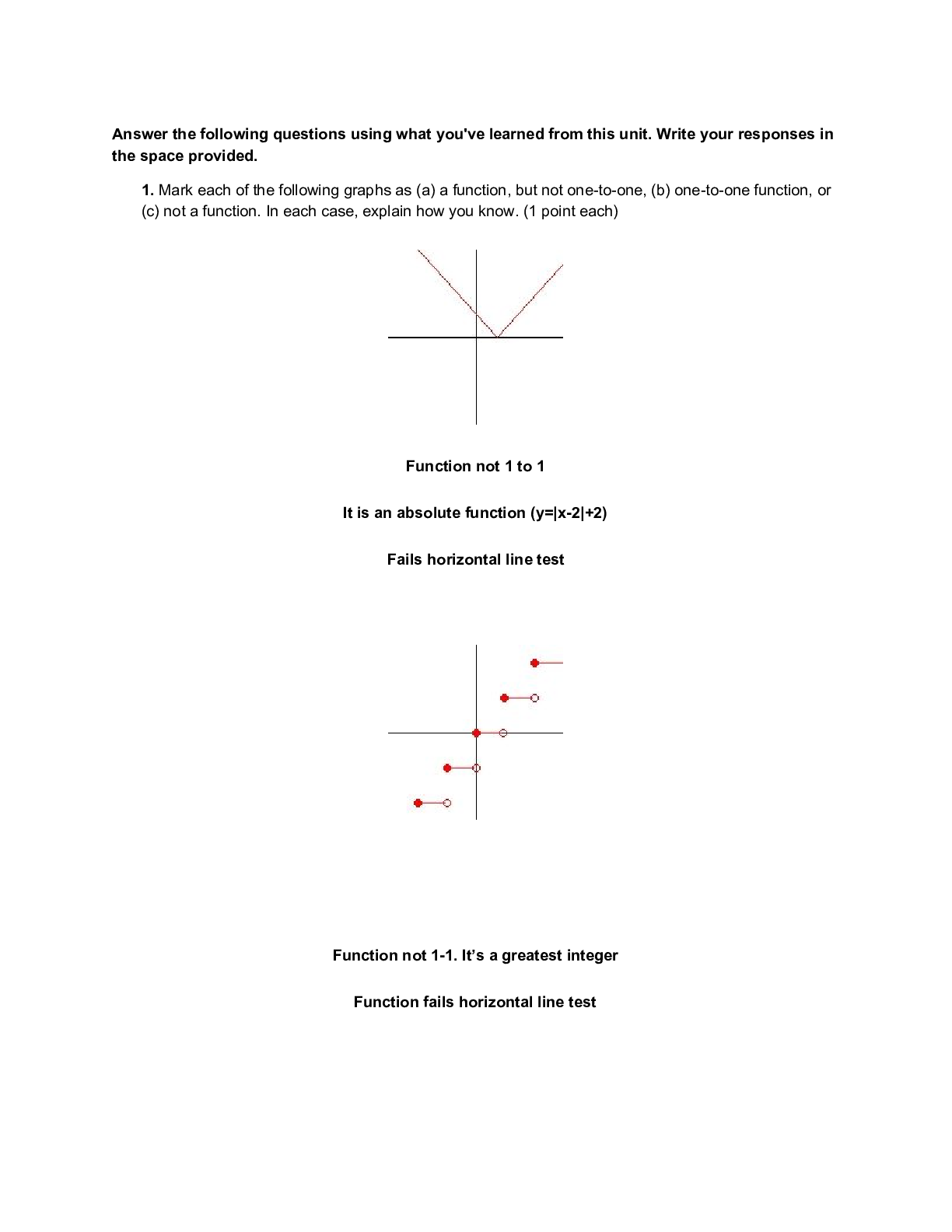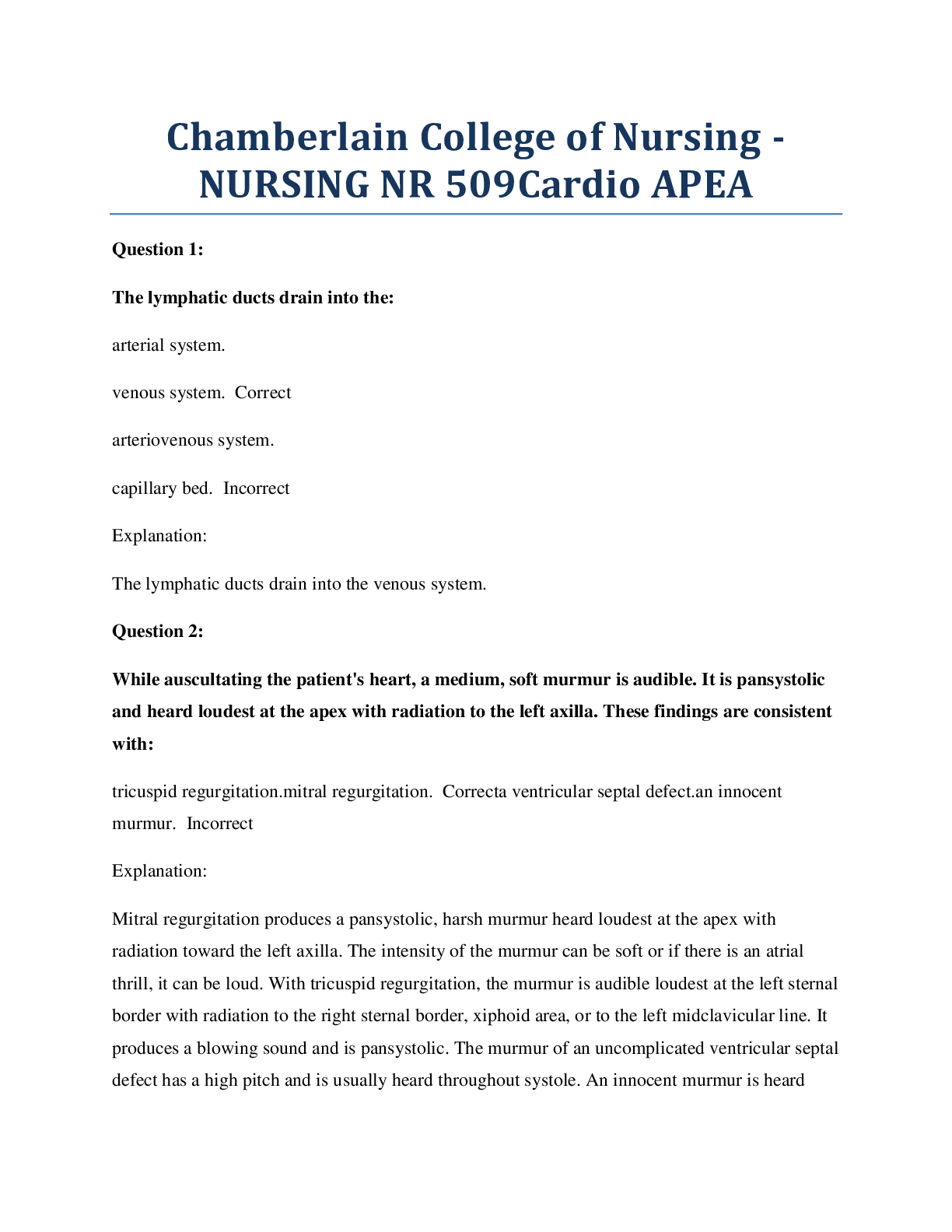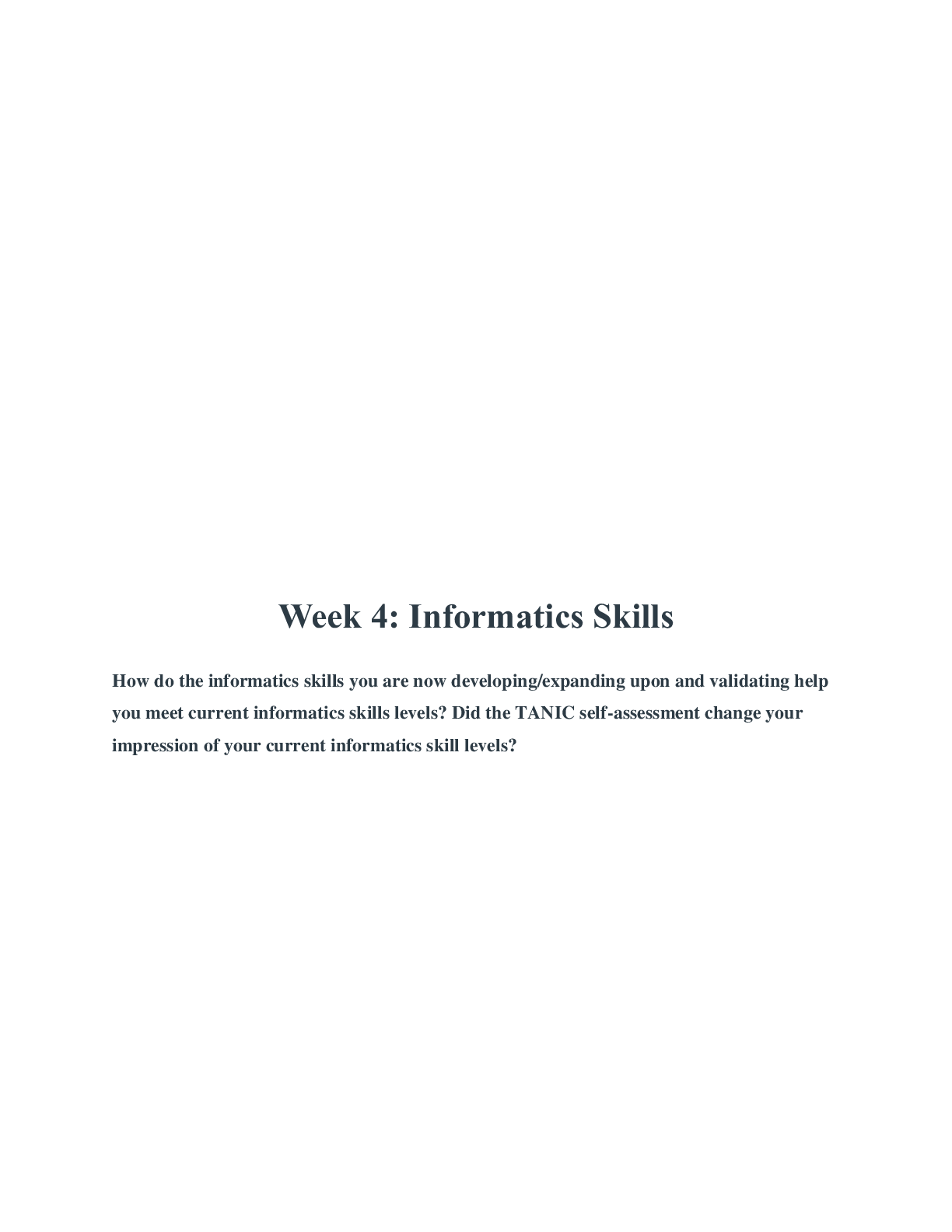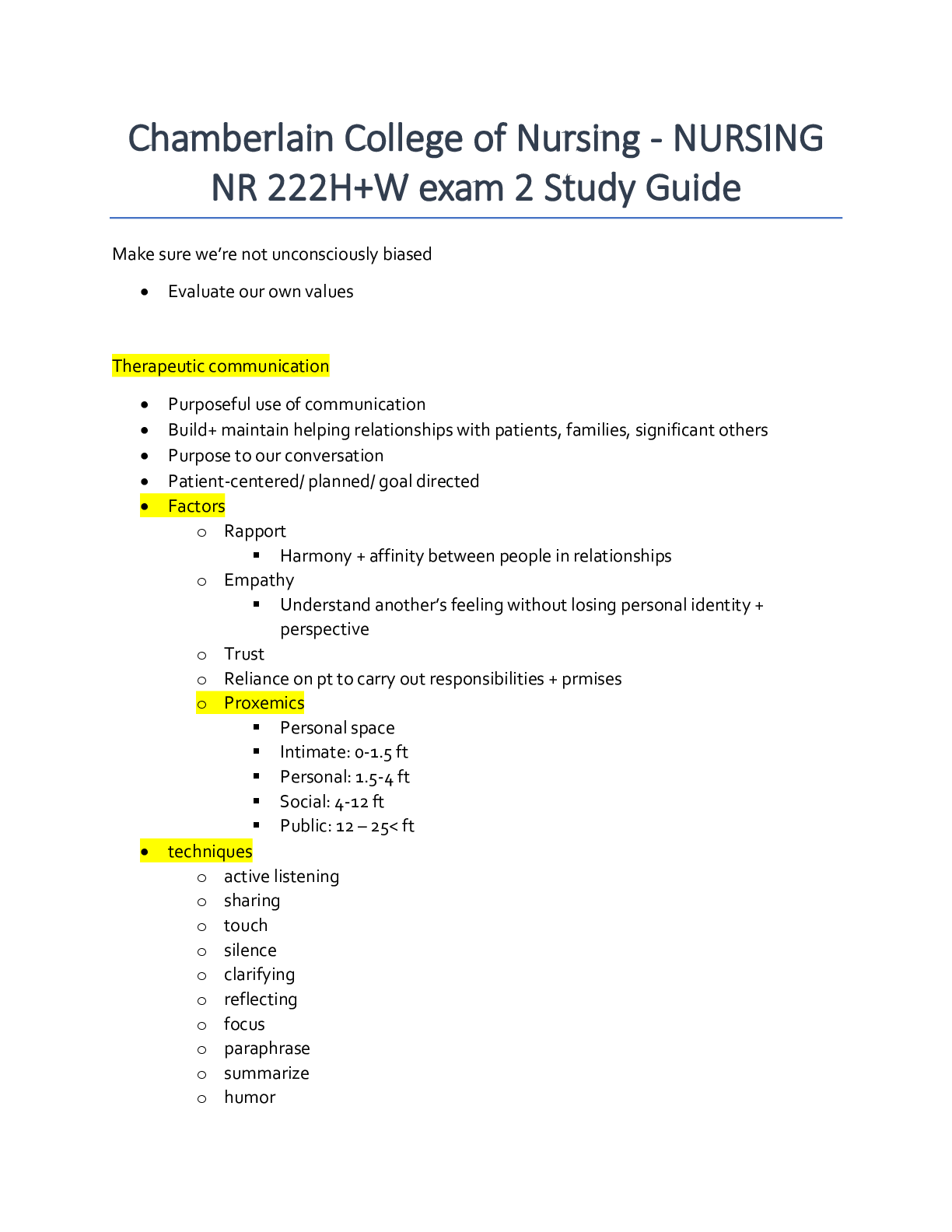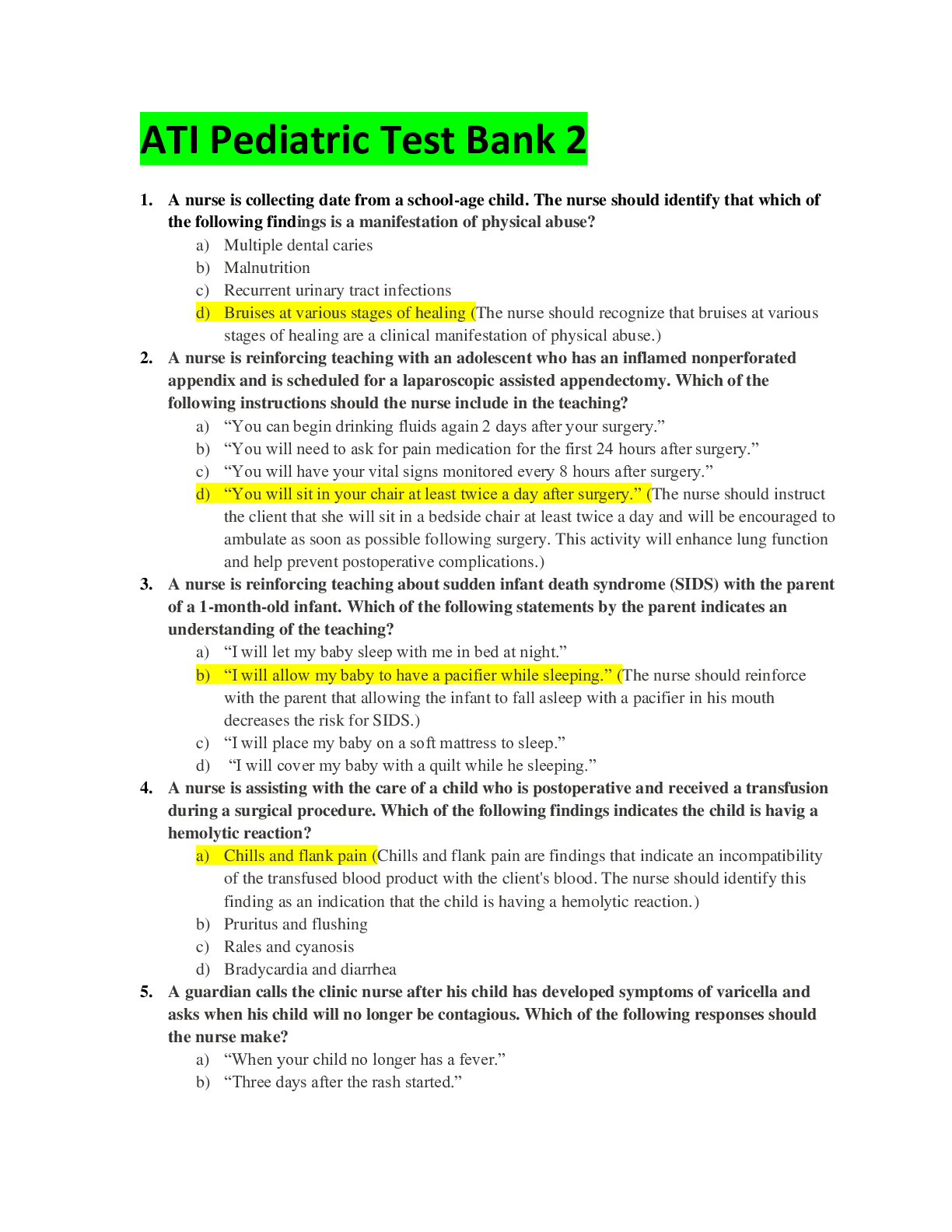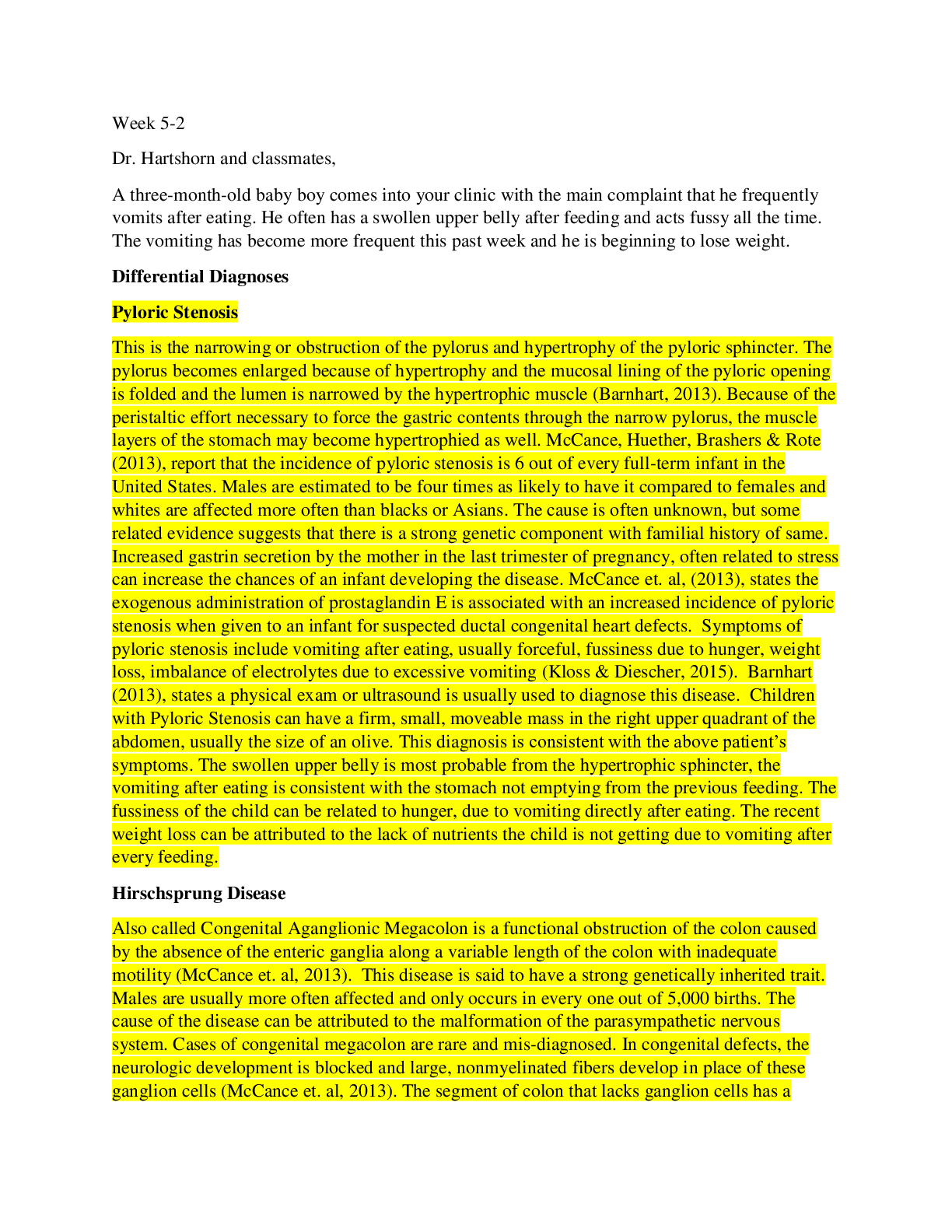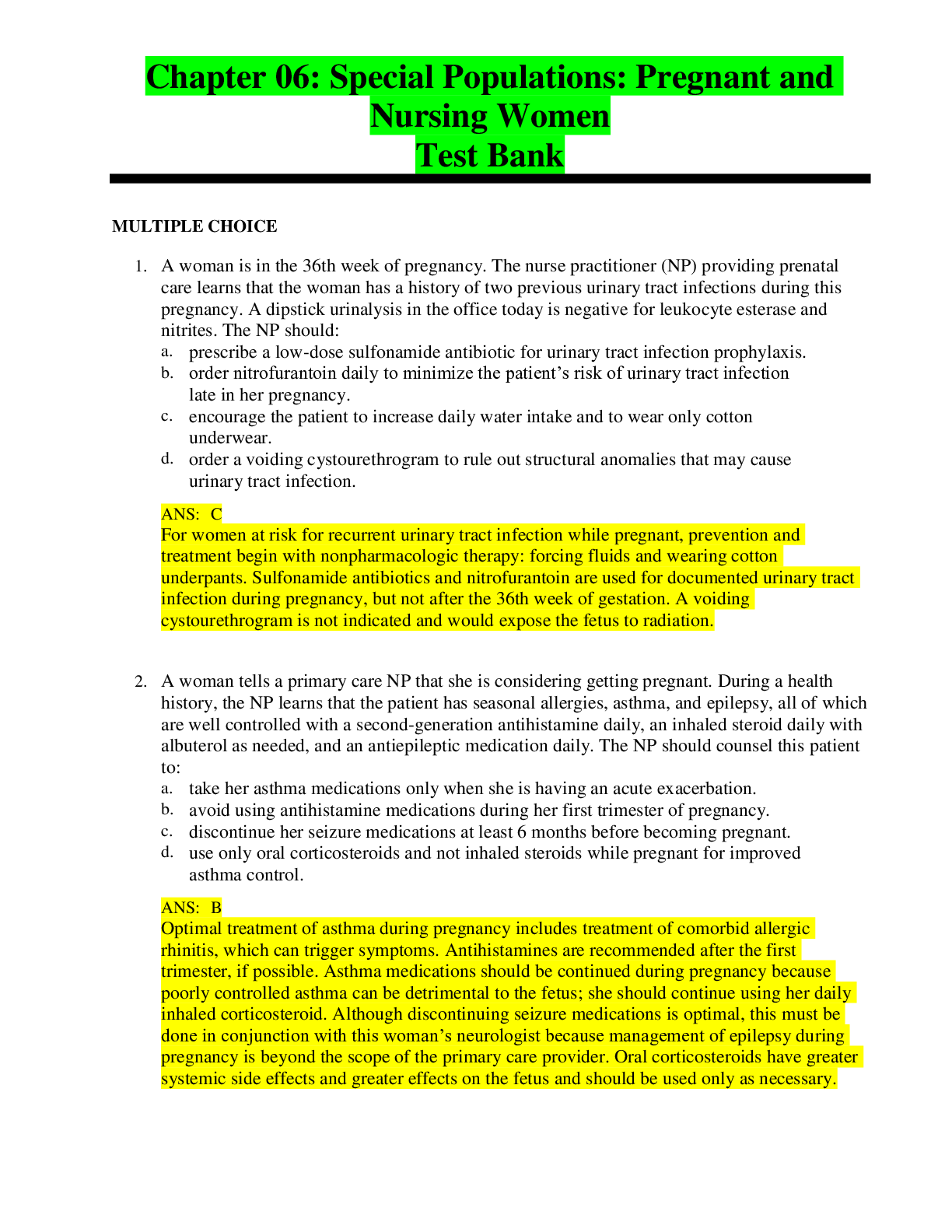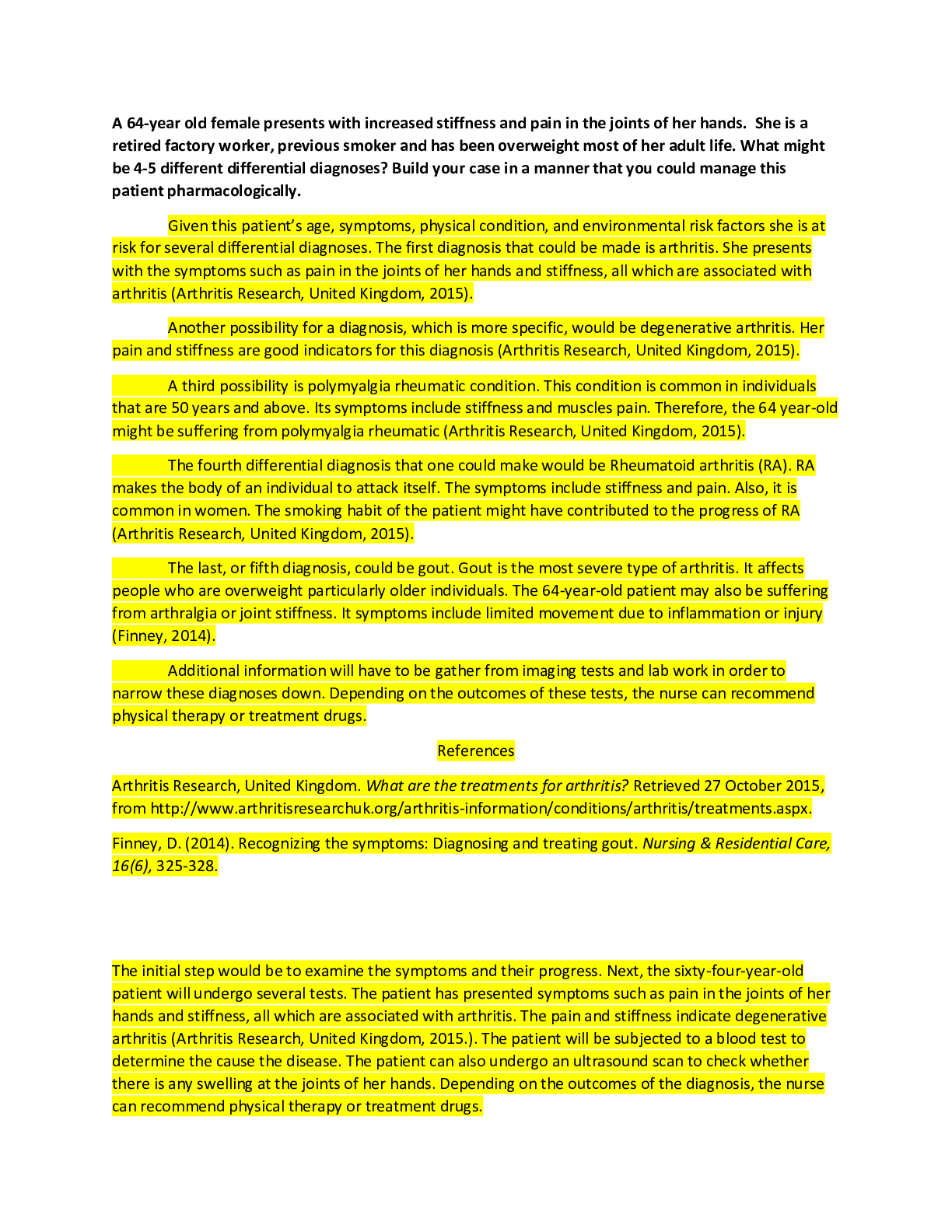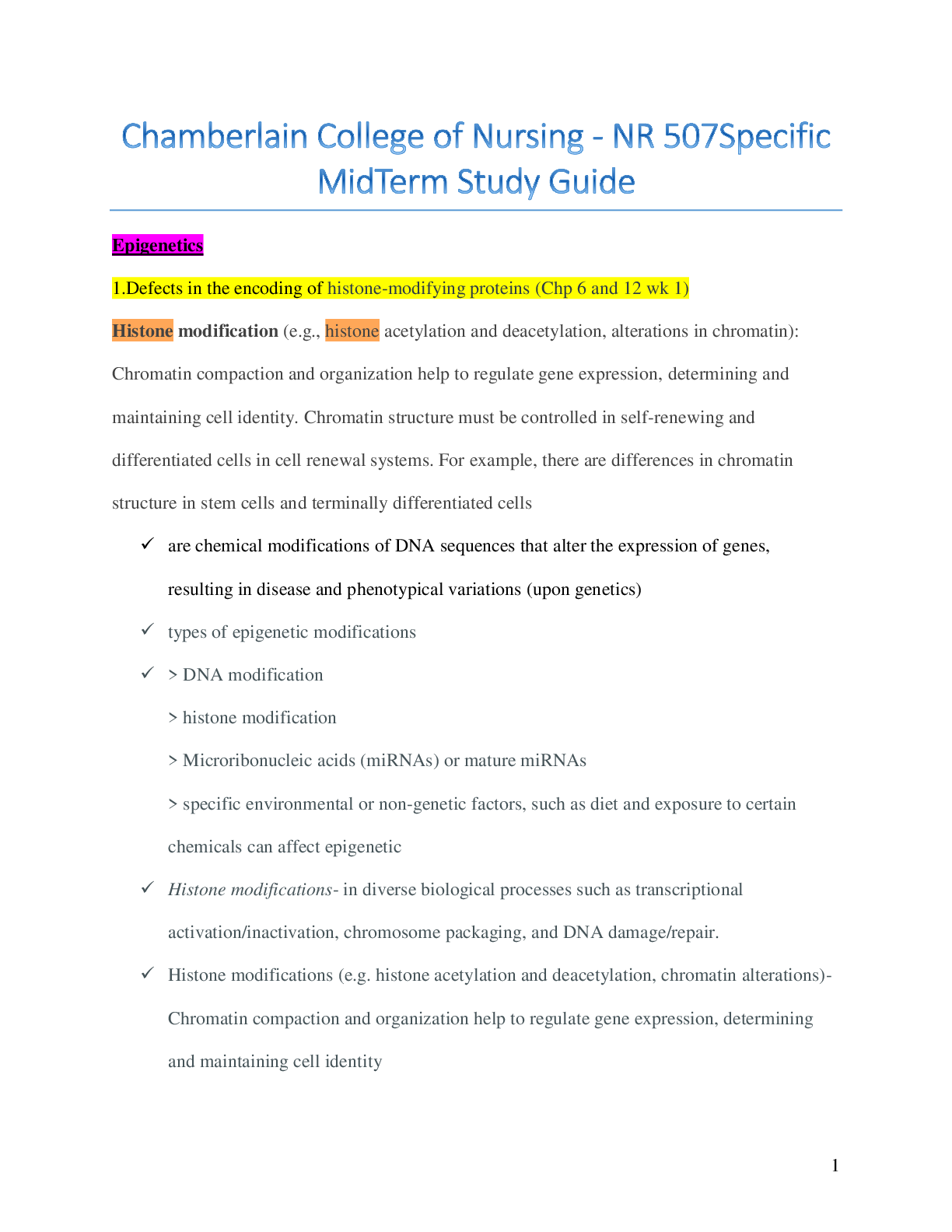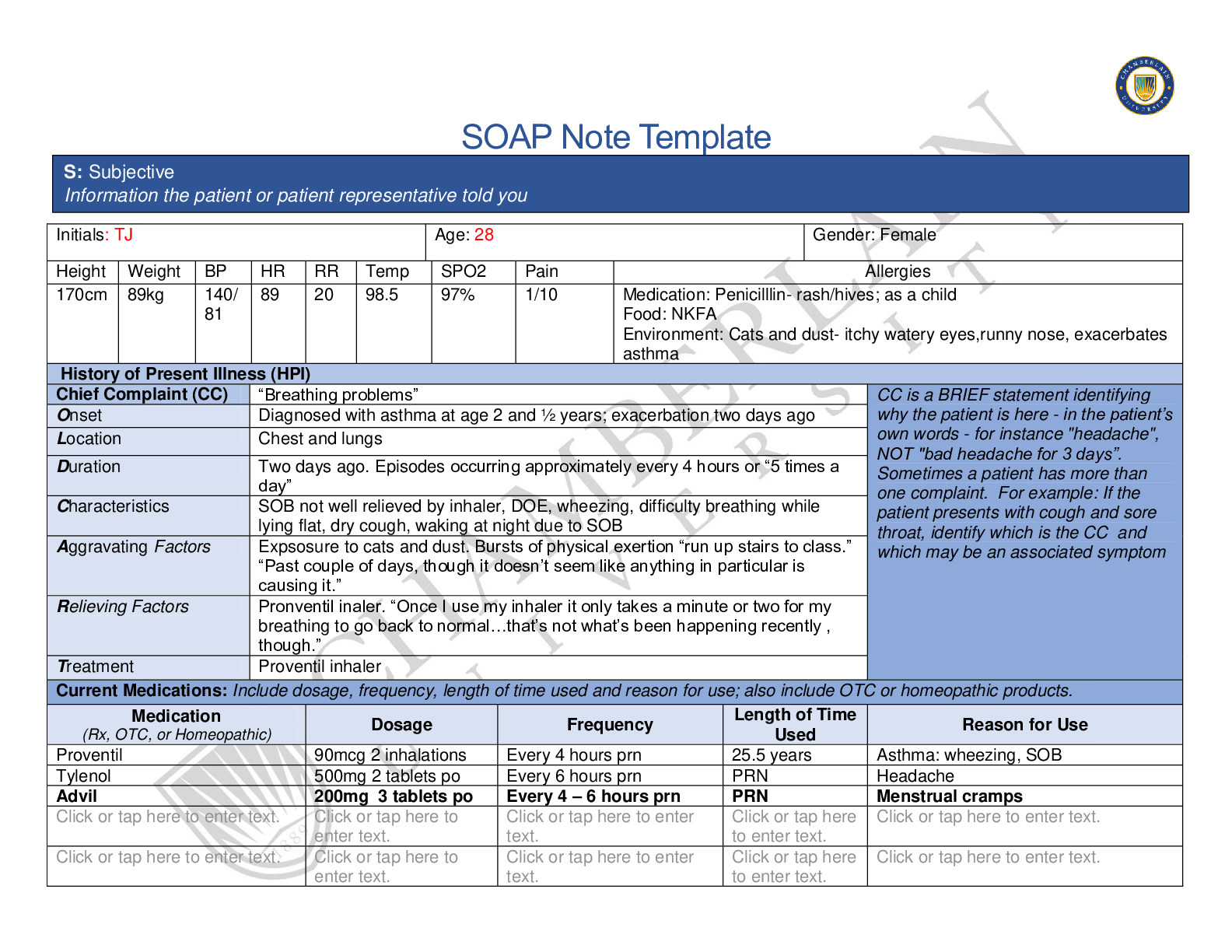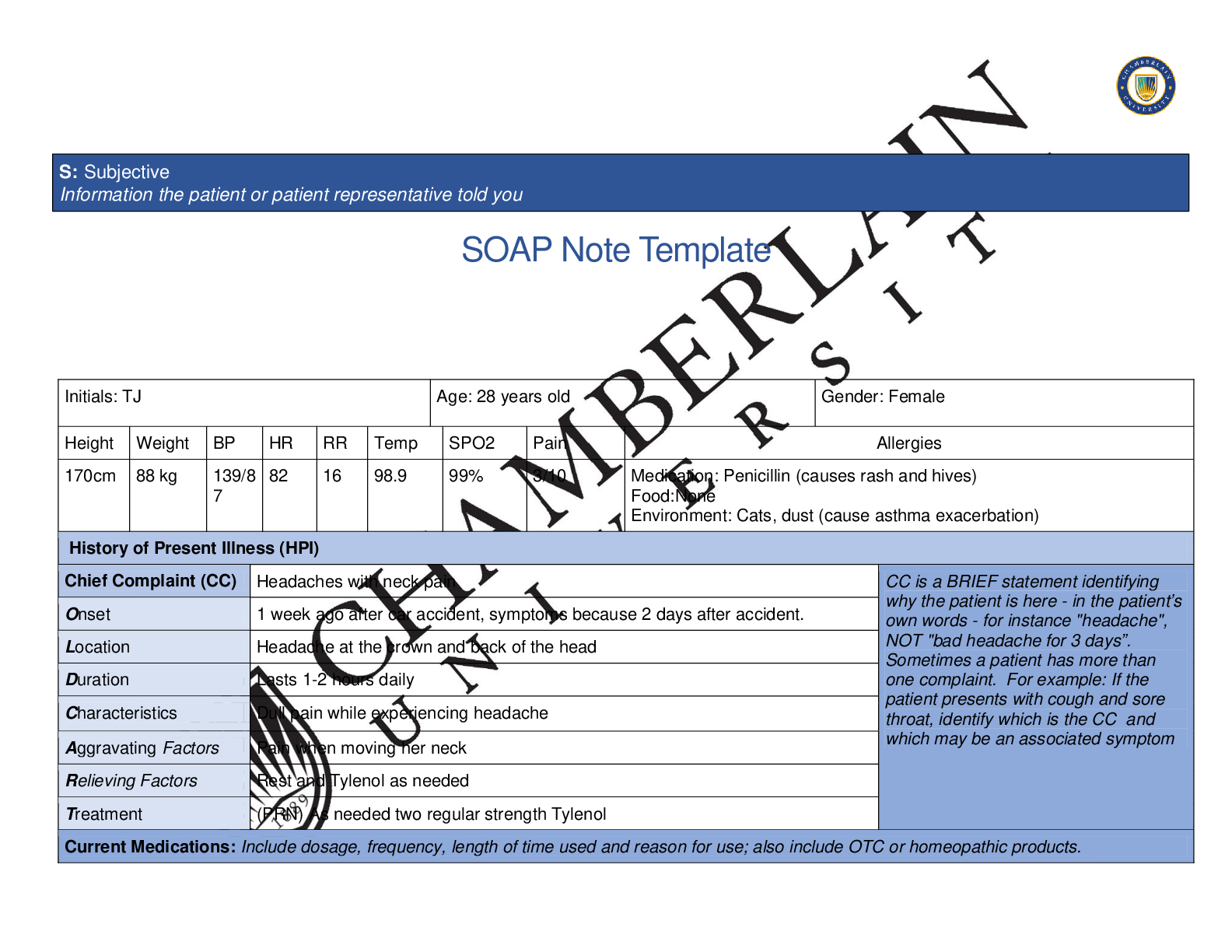*NURSING > QUESTIONS & ANSWERS > Chamberlain College of Nursing - NR 507Week 2 Case Study NR507: And Discussion Part 2 and Part 3. Gr (All)
Chamberlain College of Nursing - NR 507Week 2 Case Study NR507: And Discussion Part 2 and Part 3. Grade A.
Document Content and Description Below
Discussion Part One (graded) In primary care settings, patients often present with various respiratory symptoms such as congestion, coughing, and wheezing. While identifying a symptom’s underlying... illness can be challenging, it is essential because even basic symptoms such as persistent coughing can be a sign of a more severe disorder. The FNP must be able to differentiate between moderate and severe respiratory disorders, as well as properly diagnose and prescribe treatment for their patients. For this reason, you must have an understanding of the pathophysiology of respiratory disorders. Scenario 1: Mrs. Tomran brings in her 7-month-old infant for evaluation. She is afraid that the baby might have respiratory syncytial virus (RSV) because she seems to be coughing a lot, and Mrs. Tomran heard that RSV is a common condition for infants. A detailed patient history reveals that the infant has been coughing consistently for several months. It’s never seemed all that bad. Mrs. Tomran thought it was just a normal thing, but then she read about RSV. Closer evaluation indicates that the infant coughs mostly at night; and, in fact, most nights the baby coughs to some extent. Additionally, Mrs. Tomran confirms that the infant seems to cough more when she cries. Physical examination reveals an apparently healthy age- and weight-appropriate, 7-month-old infant with breath sounds that are clear to auscultation. The infant’s medical history is significant only for eczema that was actually quite bad a few months back. Otherwise, the only remarkable history is an allergic reaction to amoxicillin that she experienced 3 months ago when she had an ear infection. Consider the respiratory disorder and underlying alteration associated with the type of cough described. Discussion questions part one: Select two of the following factors: genetics, gender, ethnicity, age, or behavior and reflect on how the factors you selected might impact the disorder. References Choi, E., Lee, H., & Chanock, S. (2013). Human genetics and respiratory syncytial virus disease: current findings and future approaches. Curr Top Microbiol Immunol, 372, 121–137. McCance, K., & Huether, S. (2014). Pathophysiology: The Biologic Basis for Disease in Adults and Children, 7th Edition. [VitalSource Bookshelf version]. Retrieved from http://online.vitalsource.com/books/9780323088541 Discussion Part Two (graded) Scenario 2: Khristian is a 6-year-old boy who is brought in for evaluation by his parents. The parents are concerned that he has a really deep cough that he just can’t seem to get over. The history reveals that he was in his usual state of good health until approximately 1 week ago when he developed a profound cough. His parents say that it is deep and sounds like he is barking. He coughs so hard that sometimes he actually vomits. The cough is productive for mucus, but there is no blood in it. Khristian has had a low-grade temperature but nothing really high. His parents do not have a thermometer and don’t know for sure how high it got. His past medical history is negative. He has never had childhood asthma or RSV. His mother says that they moved around a lot in his first 2 years and she is not sure that his immunizations are up to date. She does not have a current vaccination record. Discussion questions part two: Identify the pathophysiology of the alteration that you associated with the cough. Select two of the following factors: genetics, gender, ethnicity, age, or behavior. Reflect on how the factors you selected might impact the disorder. References Alvarez, A., Marson, F., Bertuzzo, C., Arns, C., & Ribeiro, J. (2013). Epidemiological and genetic characteristics associated with the severity of acute viral bronchiolitis by respiratory syncytial virus. Journal de Pediatria, 89(6), 531-543. McCance, K., & Huether, S. (2014). Pathophysiology: The Biologic Basis for Disease in Adults and Children, 7th Edition. [VitalSource Bookshelf version]. Retrieved from http://online.vitalsource.com/books/9780323088541. Discussion Part Three (graded) Scenario 3: Tammy is a 36-year-old who presents for evaluation of a cough. She is normally a healthy young lady with no significant medical history. She takes no medications and does not smoke. She reports that she was in her usual state of good health until approximately 3 weeks ago when she developed a “really bad cold.” The cold is characterized by a profound, deep, mucus-producing cough. She denies any rhinorrhea or rhinitis—the primary problem is the cough. She develops these coughing fits that are prolonged, very deep, and productive of a lot of green sputum. She hasn’t had any fever but does have a scratchy throat. Maria has tried over-the-counter cough medicines but has not had much relief. The cough keeps her awake at night and sometimes gets so bad that she gags and dry heaves. Discussion questions part three: Identify the pathophysiology of the alteration that you associated with the cough. Select two of the following factors: genetics, gender, ethnicity, age, or behavior. Reflect on how the factors you selected might impact the disorder. References Farzan, S. (2009). Cough and sputum production. Retrieved from http://www.ncbi.nlm.nih.gov/books/NBK359/. Holzinger, F., Beck, S., Dini, L., Stöter, C., & Heintze, C. (2014). The diagnosis and treatment of acute cough in adults. Deutsches Aerzteblatt International, 111(20), 356-363. [Show More]
Last updated: 1 year ago
Preview 1 out of 6 pages

Buy this document to get the full access instantly
Instant Download Access after purchase
Add to cartInstant download
We Accept:

Reviews( 0 )
$9.50
Document information
Connected school, study & course
About the document
Uploaded On
Jul 07, 2020
Number of pages
6
Written in
Additional information
This document has been written for:
Uploaded
Jul 07, 2020
Downloads
0
Views
94

